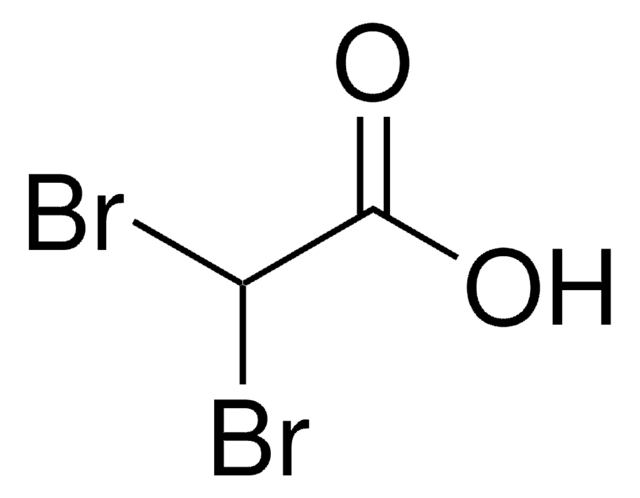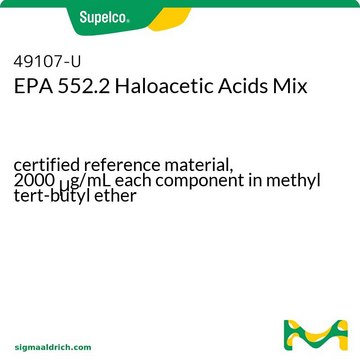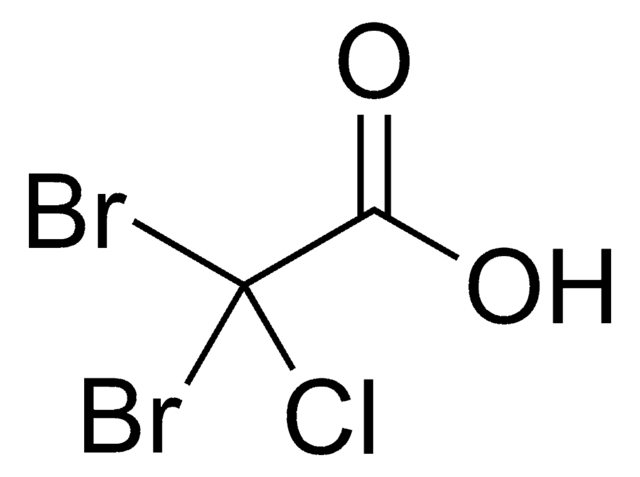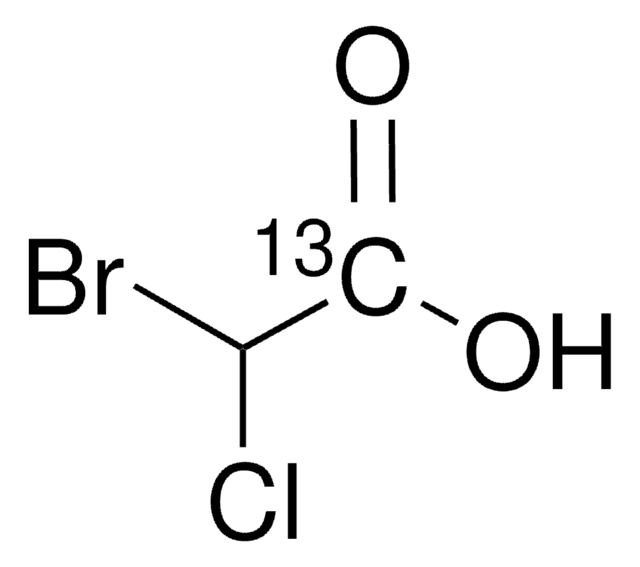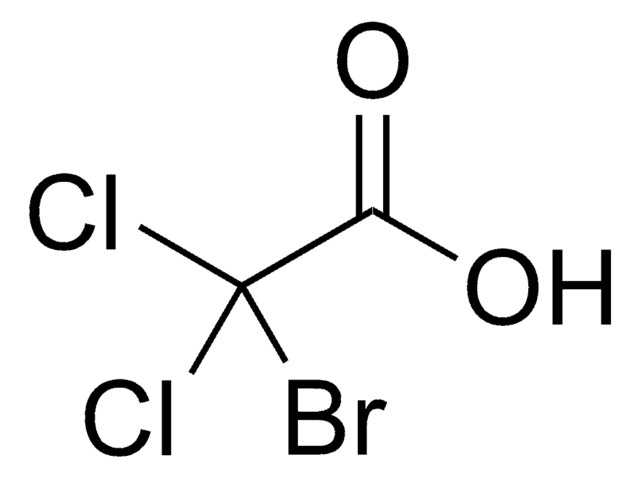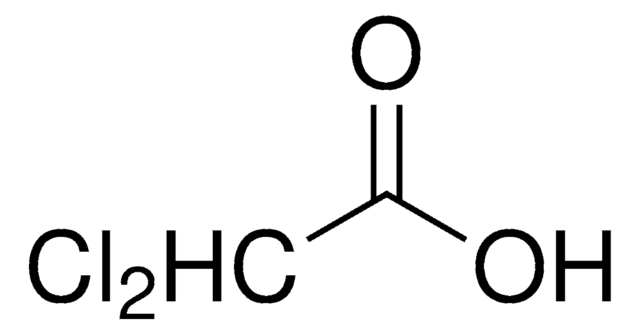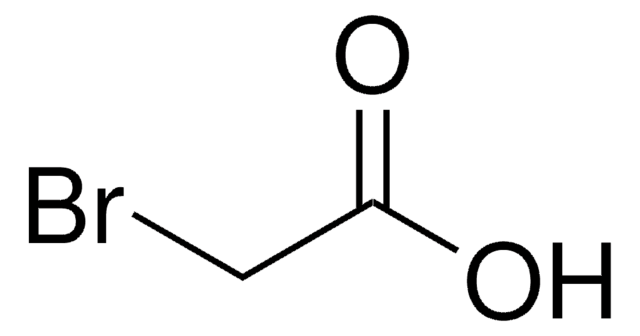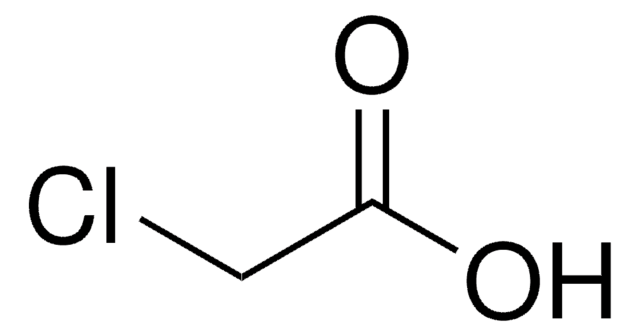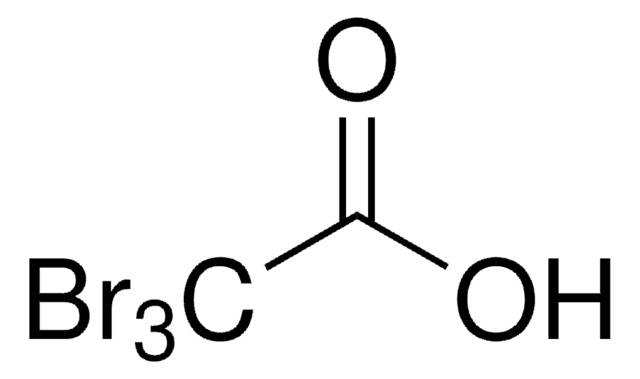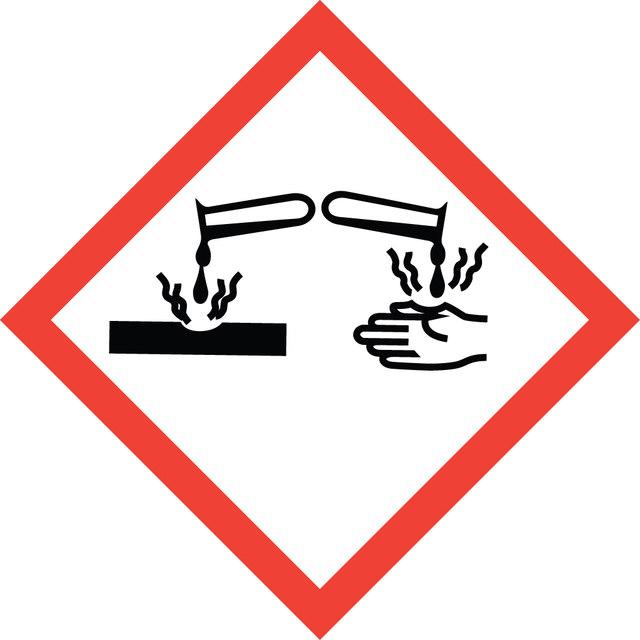所有图片(3)
About This Item
线性分子式:
BrClCHCOOH
CAS号:
分子量:
173.39
Beilstein:
1720556
MDL编号:
UNSPSC代码:
12352106
PubChem化学物质编号:
NACRES:
NA.22
推荐产品
方案
95%
折射率
n20/D 1.51 (lit.)
沸点
210-212 °C/767 mmHg (lit.)
mp
27.5 °C (lit.)
密度
1.985 g/mL at 25 °C (lit.)
官能团
bromo
carboxylic acid
chloro
SMILES字符串
[H]C(Cl)(Br)C(O)=O
InChI
1S/C2H2BrClO2/c3-1(4)2(5)6/h1H,(H,5,6)
InChI key
GEHJBWKLJVFKPS-UHFFFAOYSA-N
正在寻找类似产品? 访问 产品对比指南
警示用语:
Danger
危险声明
危险分类
Eye Dam. 1 - Skin Corr. 1B
储存分类代码
8A - Combustible corrosive hazardous materials
WGK
WGK 3
闪点(°F)
230.0 °F - closed cup
闪点(°C)
110 °C - closed cup
个人防护装备
Faceshields, Gloves, Goggles, type ABEK (EN14387) respirator filter
S E George et al.
Toxicological sciences : an official journal of the Society of Toxicology, 56(2), 282-289 (2000-07-27)
Human consumption of chlorinated drinking water has been linked epidemiologically to bladder, kidney, and rectal cancers. The disinfection by-product (DBP) dichloroacetic acid is a hepatocarcinogen in Fischer 344 rats and B6C3F1 mice. The objective of this study is to determine
J M Parrish et al.
Toxicology, 110(1-3), 103-111 (1996-06-17)
Brominated and chlorinated haloacetates (HAs) are by-products of drinking water disinfection. Dichloroacetate (DCA) and trichloroacetate (TCA) are hepatocarcinogenic in rodents, but the brominated analogs have received little study. Prior work has indicated that acute doses of the brominated derivatives are
Marianne Barrier et al.
Reproductive toxicology (Elmsford, N.Y.), 31(4), 383-391 (2011-02-08)
An adherent cell differentiation and cytotoxicity (ACDC) assay was developed using pluripotent J1 mouse embryonic stem cells (mESCs). Adherent mESCs were used to evaluate chemical-induced effects on both stem cell viability and differentiation using an in-cell western technique after a
Xiaoling Zhang et al.
Toxicology, 289(2-3), 151-159 (2011-08-26)
Bromate (BrO(3)(-)) is a drinking water disinfection by-product (DBP) that induces renal cell death via DNA damage-dependent and -independent mechanisms. Drinking water contains other DBPs in addition to BrO(3)(-). We tested the effect of two of these, sodium chlorite (NaClO(2))
Stereospecific toxicokinetics of bromochloro- and chlorofluoroacetate: effect of GST-zeta depletion.
I R Schultz et al.
Toxicology and applied pharmacology, 175(2), 104-113 (2001-09-07)
The chloro- and bromohaloacetates are drinking water disinfection by-products and rodent carcinogens. Chloro-bromo dihaloacetates are also mechanism-based inhibitors of glutathione S-transferase-zeta (GSTZ1-1). We studied the stereospecific toxicokinetics and in vitro metabolism of two chiral dihaloacetates in male F344 rats: (-),(+)-bromochloroacetate
我们的科学家团队拥有各种研究领域经验,包括生命科学、材料科学、化学合成、色谱、分析及许多其他领域.
联系技术服务部门